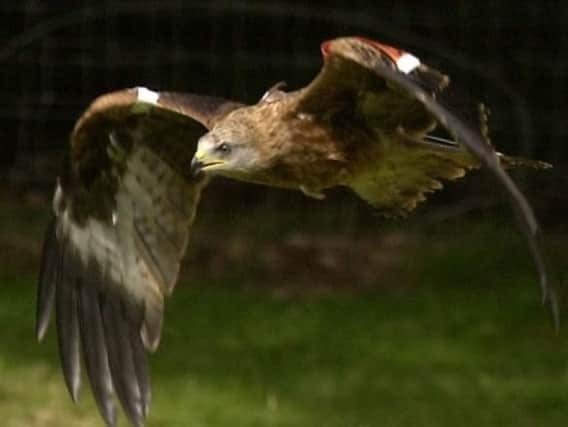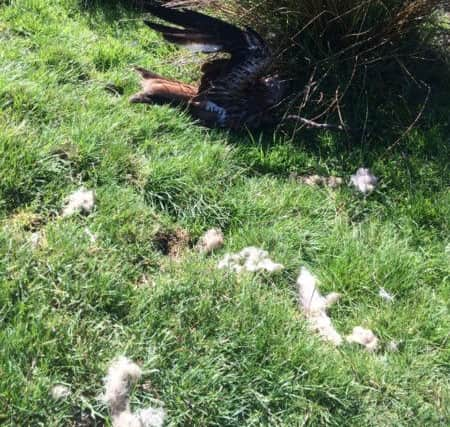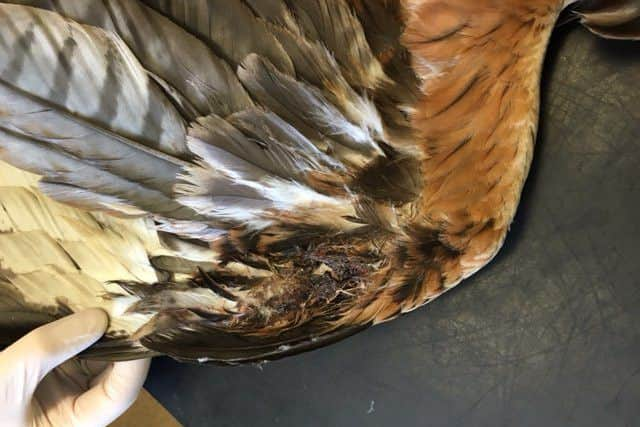'˜Beyond belief': Seventh red kite killed in Yorkshire in just two months


In the last two months, five red kites in North Yorkshire have been shot or died in circumstances that suggest poisoning, as well as three in neighbouring West Yorkshire.
Of those eight red kites, five have been shot. One, found near Malton, was rehabilitated and released back to the wild, but the other four were so badly injured they had to be euthanised by a vet.
Advertisement
Hide AdAdvertisement
Hide AdIn the latest incident, an injured red kite was found in distress and unable to fly by a walker on Hall Lane, Blubberhouses, on Sunday morning.


The walker contacted a wildlife charity and the bird was taken to a specialist avian vet in Harrogate, where examination revealed the bird had been shot and had a shattered wing.
A police spokesman said: “Sadly, its injury was so severe, it had to be euthanized. The shooting may have taken place a few days before the bird was found.”
The bodies of the three suspected poisoned birds, two of whom were found at Pateley Bridge and the other at Arthington, are being examined by the Wildlife Incident Investigation Scheme to determine the type and quantity of poison used.
Advertisement
Hide AdAdvertisement
Hide AdPC Gareth Jones, Wildlife Crime Co-ordinator at North Yorkshire Police, said the birds may have been poisoned after picking up a piece of baited meat that was not intended for them.


But he said: “The birds that were shot were flying at the time, we know that because the wings were extended, they were in flight and someone has taken a pot-shot with a shot-gun. From the geographical spread we have to be talking about more than one person doing this.
“It is beyond belief, I can’t understand why someone would want to shoot such a beautiful bird.
“They have been known to take nests if they have young themselves and can’t get carrion, but that is just nature. Normally they would live on things that have died, like dead rabbits and dead rats.
Advertisement
Hide AdAdvertisement
Hide Ad“I do wonder if a farmer has seen that perhaps it is lambing time, when the after-birth comes out of the lamb, but they are scavenging, that is what they do. The farmer might think they are after the lambs and taken a pot-shot.


“Or whether it is a game keeper who doesn’t like anything with a hooked beak. It is impossible to say, short of catching them in the act.”
Outside North Yorkshire, other incidents include a suspected poisoning at Arthington and a bird found in Bramhope whose injuries were consistent with a puncture wound across its chest due to being shot with a rifle.
Last month, it was reported that a red kite was shot and killed in woodland near Alwoodley Lane in the Eccup area of north Leeds. West Yorkshire Police said the bird had been laying its eggs just hours before it was shot from its nest. Its carcass was found hanging from a tree on April 21.
Advertisement
Hide AdAdvertisement
Hide AdA red kite was also discovered injured by a walker on farmland around Nidd, near Harrogate, on Saturday April 25.


Police said it had been shot multiple times while it was flying and had to be put down by a vet because “its wing was so severely damaged”.
Red kites are protected under schedule 1 of the Wildlife and Countryside Act 1981 and anyone found killing one can face up to six months in jail.
Mr Jones said there was often a spike in bird of prey persecution in the spring, but that this year had been particularly bad.
Advertisement
Hide AdAdvertisement
Hide AdHe said: “Red kites were persecuted into virtual extinction in the UK, but in recent years they have been re-introduced through breeding programmes at a number of locations nationally.
“In Yorkshire, they have spread from their release site at Harewood House, and are now breeding over a large area. Red kites are scavengers, and normally eat carrion, their favourite food being rats and rabbits.
“Red kites are magnificent birds than can be regularly seen soaring over our area, bringing pleasure to many people. They are a Schedule 1 bird and as such are afforded special protection under the Wildlife and Countryside Act.
“I am personally saddened by the scale of persecution of these birds - it has to stop, and I would ask for anyone who can help this investigation to get in touch.”
Advertisement
Hide AdAdvertisement
Hide AdAnyone with information that could assist the investigation is asked to contact North Yorkshire Police on 101, select option 2 and ask for PC Gareth Jones, or email [email protected]. You can also contact Crimestoppers anonymously on 0800 555 111.
According to the Yorkshire Wildlife Trust, between 1999 and 2003 a partnership involving Natural England, RSPB, Harewood Estate and Yorkshire Water released a total of 69 young red kites into the county.
They were sourced from The Chilterns, where a similar and extremely successful release programme had begun ten years earlier. In December 1999 they were joined by an untagged red kite of unknown origin, effectively increasing the total to 70.
The birds were released at Harewood Estate, but have since been spreading ever-wider through the Yorkshire countryside.
Advertisement
Hide AdAdvertisement
Hide AdIn 2001 a satellite breeding population became established in the Yorkshire Wolds; when two kites from the 1999 release at Harewood bred successfully, they became the first pair in East Yorkshire for 150 years